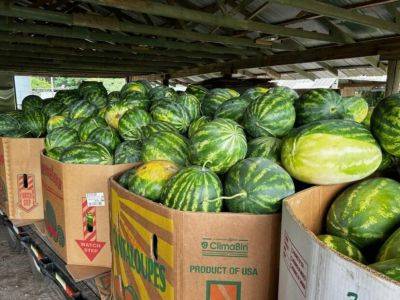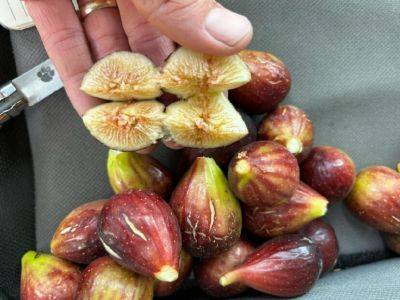Zack Snipes
SC Fruit and Vegetable Field Report- July 18, 2022
24.07.2023 - 11:58 / hgic.clemson.edu
Congratulations to Sidi Limehouse of Rosebank Farms for winning the SC Big Melon Contest at the Edisto REC Field Day this past Thursday. Sidi weighed in a 124-pound melon. This was the inaugural SC Big Melon Contest, and we hope to keep this event going for years to come. So start preparing for next year’s contest. Sidi says, “I would like some good competition next year.”
Plant Pathologist Tony Keinath reports, “With the wet weather the past two weeks, gummy stem blight is spreading rapidly on watermelon. Because of widespread resistance to tebuconazole and the need for systemic fungicides, growers should rotate fungicides until harvest is finished.”
Rob Last reports, “With increasing rainfall, disease pressure is building rapidly in crops. Gummy stem blight is very active in cucurbit crops. As we approach the end of the picking season in places, it is still important to maintain fungicide programs up to 1 week of harvest. Once harvest is over, prompt destruction of the previous crop residue will also be important to help reduce inoculum levels for fall crops. Downy mildew is active in most cucurbits, and we are finding anthracnose in tomatoes, peppers, and eggplant. Insect activity is also increasing in crops from aphids, cucumber beetles, armyworms, and stink bugs. While a pyrethroid may be the more inexpensive application initially, reducing beneficial insects can be more costly in the long term. Selective products, while more expensive initially, may help preserve beneficial insect populations. The net result in the longer term is an increase in sustainability.”
Zack Snipes reports, “It seems like it rains every afternoon lately. Fields are sloppy wet. Those that aren’t finished up will be by week’s end. For those
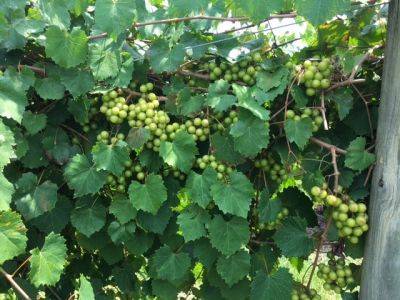
SC Fruit and Vegetable Field Report – July 26, 2021
Zack Snipes reports, “We are in a summer weather pattern with warm, muggy days and occasional thunderstorms. Most crops have finished up or are in the process. Now is a great time to sit down and do some crop planning and field rotation planning. I collected many soil and root tissue samples lately and had them analyzed for nematodes. I was surprised at how many nematodes were present in the fields. Nematodes can interfere with growth, cause stunting, and lower overall yields. Sometimes the symptoms of nematodes can be very discrete, so sampling right now is the best way to get a baseline of your populations and how to properly manage and rotate fields. If left unchecked, thousands of dollars are wasted before the first seed is planted into a field.”

SC Fruit and Vegetable Field Report July 6, 2021
Dr. Tony Keinath reports, “Basil downy mildew was found in mid-June in Charleston. Symptoms start as faint yellowing of leaves, which eventually show brown spots surrounded by yellow areas. To see the spores, look on the bottom of a symptomatic leaf. Sometimes it helps to hold the leaf up to a light source (but don’t look directly into the sun). Seeing spores is useful to rule out nutrient deficiency or sunburn on leaves. I do not know of any cultivars that truly are resistant or any organic biopesticides that are effective. Once downy mildew spores arrive in South Carolina, the disease will be present until frost kills the basil host.”

SC Fruit and Vegetable Field Report – July 20, 2021
Justin Ballew reports, “Not much has changed in the midlands over the last week. We’ve received some scattered rain, and it has been warm and humid. As a result, we are still seeing disease issues. We’re still picking tomatoes, squash, zucchini, cucumbers, sweet corn, and a few greens. We’re at an in-between stage in several fields where the spring crops have finished, and folks are preparing to plant fall crops. Some have already started fall cucurbit plantings. For anyone planting strawberries this fall, if you are still deciding which varieties to try, see NCSU’s 2020/2021 variety comparison data (pages 9 and 10).

SC Fruit and Vegetable Field Report January 18, 2022
Rob Last reports, “In our area, crops are developing well with few pest or disease issues currently. Some brassicas are displaying a reddening to the older leaves associated with reduced phosphorous uptake. Phosphorous uptake can be reduced in cold temperatures but will recover when we see some warmer temperatures. There is no response to an additional application. Where strawberries are flowering or have fruit, it is advisable to remove those to minimize sources of Botrytis gray mold for later in the year.”
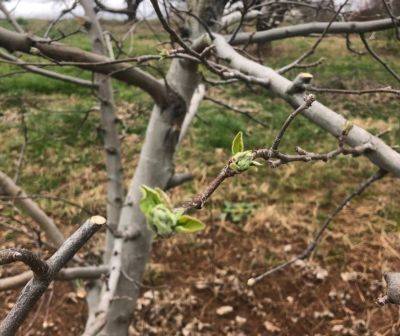
SC Fruit and Vegetable Field Report- March 14, 2022
Dr. Matt Cutulle reports, “I saw my first nutsedge plants this year pop up in the plastic mulch of a fellow researcher’s trial last week in Charleston. Soil temperatures in plastic mulch systems are going to be higher, which may lead to earlier sprouting of yellow nutsedge tubers. New tubers begin forming four to six weeks after a new shoot emerges. Individual nutsedge plants may eventually form patches 10 feet or more in diameter, thus it is important to practice field sanitation once an infestation is recognized.”
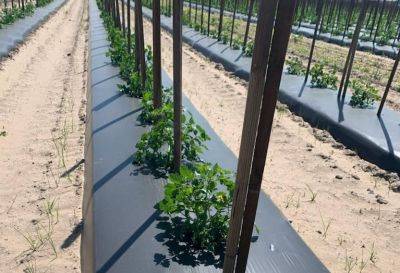
SC Fruit and Vegetable Field Report – April 18, 2022
Zack Snipes reports, “It has been a very windy spring. The winds are drying out our soils and beating up plants. I have looked at some tomatoes, and the ones that aren’t tied are wind-whipped, and the ones that are tied have callus tissue forming where the string is touching them. We have some beautiful lettuce and greens coming in right now, along with spring onions. I have also seen some squash coming in on farms that grew squash in high tunnels. Strawberry plants are still small and have very few blooms for this time of year. We are harvesting highbush blueberries in high volumes right now. I think we escaped more cold damage than previously expected.”
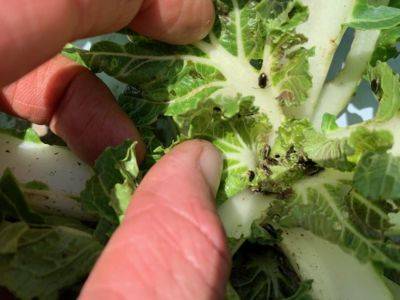
SC Fruit and Vegetable Field Report – May 31, 2022
Zack Snipes reports, “It seems like everything is coming in from the fields right now. We got some rain but could really use some more. I am seeing lots of aphids on a variety of crops (melons, cukes, eggplant). I am also seeing ladybird beetles and parasitized aphids in these fields, which means our predators are out there working for us. Bacterial wilt and Southern blight are starting to appear on tomatoes as well. Knowing the difference and preparing for next season’s crop is critical. It is getting hot and is still windy, so growers might consider adding one or more irrigation cycles to their fields. Remember that in our sandy soils, any irrigation event over an hour is just wasting water. More frequent 30-45 minute cycles are more efficient.”
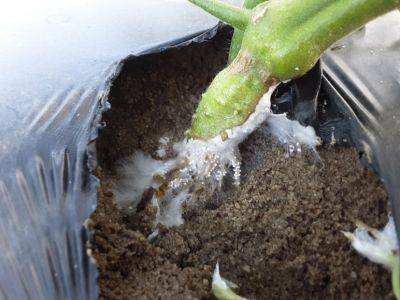
SC Fruit and Vegetable Field Report – June 6, 2022
Rob Last reports, “Insect and disease activity is increasing in the area, across a broad range of crops. In cucurbits, we are seeing powdery mildew and gummy stem blight in watermelon. Remember to keep spray intervals tight. Loopers are also being found in the area, and applications to manage rind worms will be beneficial as we rapidly approach harvest. Fusarium wilt of watermelons is showing up in many fields. At this stage, there is no effective treatment; however, soil temperatures are likely to reduce the incidence of new infections. Tomatoes and peppers are developing well with Southern blight and bacterial wilt in evidence. Spider mites are very active right now. Blackberries are just coming to harvest with good flavor and quality. Remember to scout your crops regularly to ensure timely applications can be made.”
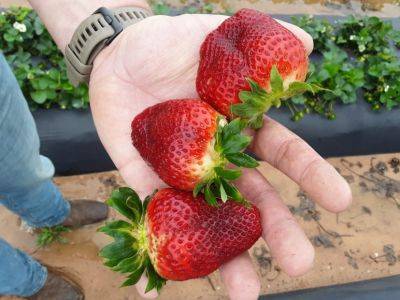
SC Fruit and Vegetable Field Report March 28, 2022
Rob Last reports, “The first of this season’s strawberries are coming to market with good quality. Growers still need to be very mindful of spider mites. Populations are around in the area but are variable. As we get into harvest season, gray mold management will be critical, so sanitation and appropriate fungicide applications will be needed. Otherwise, preparations for watermelon planting and some early cantaloupes have been sown. Damage assessments on later variety peaches will continue.”
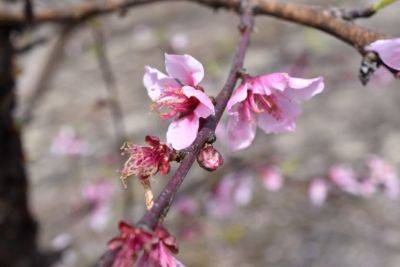
SC Fruit and Vegetable Field Report – March 21, 2022
Rob Last reports, “Starting with strawberries, spider mites are increasing in the area with eggs and adults warranting treatment. Strawberry crops are very susceptible to mite damage at the moment. Remember to sanitize plants by removing dead flowers and fruit to mitigate against disease. We have lost some brassica crops due to the freeze; if the growing point is intact, the crops may recover with reduced yields possible. There will be a peach crop. Early peach varieties have been hit quite hard in the area, with later varieties looking promising. Blueberries will make a crop, but again, there are varying levels of damage.”
